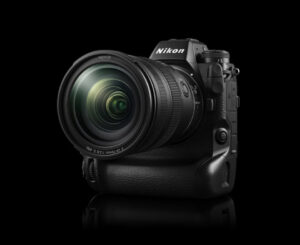
It is undeniable that RED Digital Cinema has changed the camera industry, with their minimal, relatively affordable, cinema cameras. But what you may not know about them though is what they have done to make sure that no one else could compete with them…
History of RED Digital Cinema

RED Digital Cinema was founded all the way back in 2005 by Jim Jannard. At the 2006 NAB Show, RED announced the release of its first camera, the RED ONE. The RED One was of the first Camera at a time to provide 4K Compressed RAW, while at that time 2K was predominant, while being relatively affordable. And this is still to this day quite a big deal. If you have worked with RAW before you would know that one of the main challenges working with is storage, as storage is not cheap can make a big difference in terms of budget in the long run.
The first RED One shipped in 2007 and from there, the company solidified itself as a big player and in the early adopters of the camera, you could find names like Peter Jackson or Steven Soderbergh, who shot documentaries like Crossing the Line or Che. Since then, the company has released many cameras that have been used for many high productions movie and their cameras have been, over the years, more affordable, compact and reliable.
RED Digital Cinema has truly brought a much needed new technology to the market and over the years, has been one of the main actors who helped the digital to be adopted for big productions.
KILLING THE COMPETITION
If we come back to the capabilities of the RED camera, and its specs, one important aspect is the “Compressed RAW.” As we talked about before, Compressing the RAW allows you to decrease the amount of space you take to store the footage you capture and drastically decreasing your storage specific budget. This is a key aspect when it comes building cinema camera nowadays. If you are able to provide such a capability and your competitors are not, this is a huge advantage that could make them completely irrelevant. But how could you prevent them from doing such a thing?
In 2010, RED filed for a patent over lossless compression algorithm of raw footage, meaning that even if you decrease the size of the files generated, after compressing it later, you will be able to recover all the information processed that way.
Now this might not be a big deal if they filed for a patent to protect the way they do this lossless compression. However, they went a different route and claimed that they owned lossless compression of RAW footage entirely and that anybody who wanted to attempt this, whatever their algorithm, would need to pay them a fee, until it expires, in 2028… And this is one big issue that people have with this patent, there is nothing specific about it, but if you do compressed RAW internally, you have to pay a fee to RED…
And this patent was not just for show…
The many lawsuits of Red Digital Cinema

in 2013, RED took action against Sony claiming that Sony infringed on their patent. Sony counter-attacked and claimed that RED also infringed their patent and eventually after staring at each others they decided to reach an agreement and not go further, but because of this, you cannot have RAW compressed video on Sony cameras.
In 2019, Apple tried to tackle this issue and have the patent disregarded, claiming that it was way too broad and vague to actually be a patent, but Apple lost and to this day, companies like Apple or Atomos have to pay royalties to feature ProRes RAW in their product.
RED Digital Cinema is ready to sue even the biggest players on the game, to make sure that they cannot have access to Lossless compress RAW and by doing so, they remain the leader of the market and keep receiving royalties from those who try or need to put it on the market. This does not allow for new companies or innovation to be made. If you are a new company and you are trying to create a cinema camera but you cannot compress the RAW footage that you create, this becomes very limiting in terms of innovation and the market cannot move further as fast as it could initially.
WHAT’S NEXT – RED Digital Cinema vs Nikon

But the story is not over. With the release of the Z9 which can record in both ProRes RAW and TicoRAW, Nikon has also been a target of RED. However, while most of the companies mentioned before have settled with RED or came to an agreement, Nikon denied RED’s claims and stated that they would go to court. We will know in January 2024 whether or not RED will be able to continue with its prohibitive patent or not. If Nikon wins, this will set a precedent for a case against RED and may allow other companies to do the same, but if they lose, RED might be able to keep preventing anyone using Internal Lossless Compressed RAW until 2028, or even later, if they file another patent…












